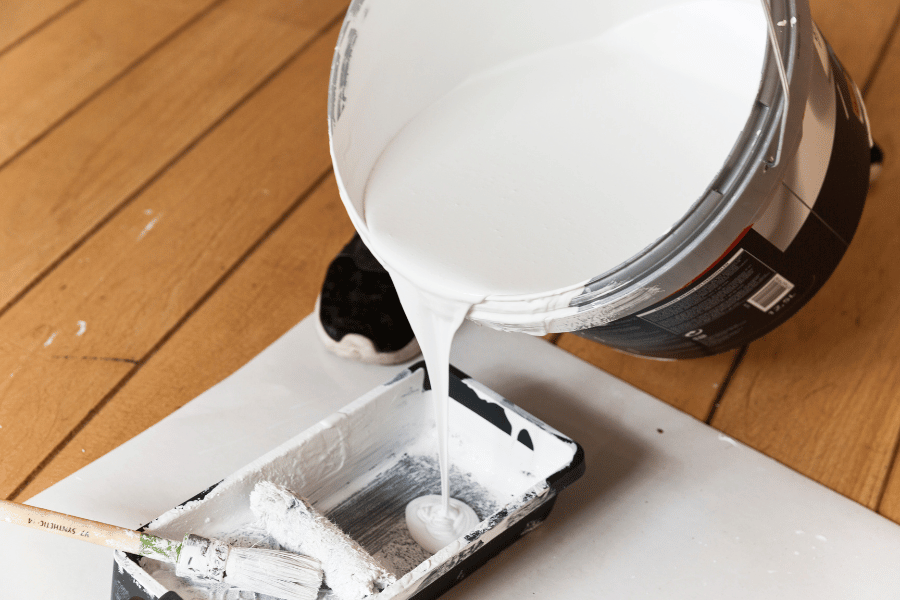When embarking on a house painting project, it’s common to focus on the color and finish of the paint. However, there’s a crucial step that often gets overlooked but can make a significant difference in the outcome of your project: the application of primer.

Understanding the Primer’s Purpose
Think of primer as the foundation for your paint. Just like a well-built house needs a solid foundation, a lasting paint job requires a good primer. Primer serves multiple roles: it helps in adhesion, ensures uniformity, and increases the durability of the paint job.
Adhesion: The Key to Longevity
One of the primary reasons to use a primer is to enhance the paint’s adhesion to the surface. This is particularly important in areas with extreme weather conditions, like Georgetown or Cedar Park, Texas. A well-applied primer can withstand the rigors of temperature changes and humidity, preventing peeling and cracking of the paint over time.
Uniformity: A Canvas for Your Color
Have you ever noticed how some painted surfaces have uneven tones, with some areas looking darker than others? This is often due to the lack of a primer. Primer creates a uniform surface that ensures the paint color you’ve chosen looks consistent across the entire area. This is especially crucial when you are covering a darker color with a lighter one.
Durability: Protecting Your Investment
Painting a house is an investment, and like any good investment, you want it to last. Primer adds an extra layer of protection to your painted surfaces, safeguarding against stains and moisture. This is particularly important in high-traffic areas or rooms like kitchens and bathrooms, where the walls are more prone to damage.
When Should You Use a Primer?
Now that you understand the importance of primer, the next question is, when should it be used? Here are some scenarios:
- New Drywall: New drywall is highly absorbent. Without a primer, it would soak up the paint, requiring more coats and potentially leading to an uneven finish.
- Dark to Light Color Changes: When you’re going from a dark to a light color, a primer is essential to prevent the old color from bleeding through.
- Stains and Odor Blockage: If the walls have stains or odors (like smoke), a primer can seal these and prevent them from affecting the new paint.
- High Humidity Areas: In areas like bathrooms, a moisture-resistant primer can help prevent mold and mildew growth.
- Challenging Surfaces: Surfaces like metal or glossy finishes can be tricky for paint to adhere to. A primer ensures that the paint sticks properly and lasts longer.
In conclusion, the role of primer in your painting project is not just an additional step; it’s a critical element that ensures the success and longevity of your paint job. Whether you’re refreshing the exterior of your home in Leander or updating the interior of your house in Round Rock, don’t overlook the power of a good primer.
Remember, a successful painting project isn’t just about choosing the right color; it’s about preparing the surface properly to showcase that color. By understanding and utilizing the role of primer, you’re ensuring that your painting project has the strong foundation it needs to look great and last for years to come.

Leave a Reply